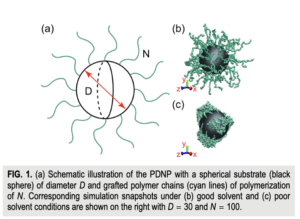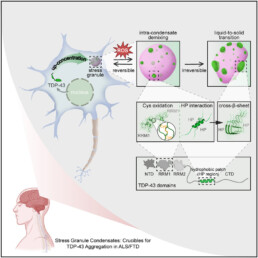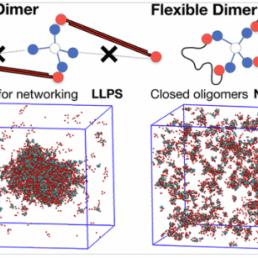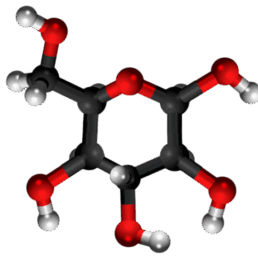Molecular dynamics investigation of polymer-decorated nanoparticles with co-nonsolvent
A new study by Sommer and colleagues in the Journal of Chemical Physics investigates how polymer-decorated nanoparticles (PDNPs)—tiny particles coated with grafted polymer chains—undergo structural changes in mixed-solvent environments. Using detailed molecular dynamics simulations, the authors of the study entitled “Molecular dynamics investigation of polymer-decorated nanoparticles with co-nonsolvent: Structural transitions from isotropic layers to heterogeneous patches” reveal how the co-nonsolvency (CNS) effect—a phenomenon where adding a small amount of a secondary solvent can change overall solvent quality—induces dramatic transformations in PDNP morphology.
| In good solvents, the grafted polymers form uniform, isotropic “brush-like” layers around the nanoparticle, completely covering its surface. As CNS concentration increases, the solvent becomes poorer, triggering a first-order phase transition in which these smooth polymer coatings collapse into heterogeneous patchy micelles. |
|
|---|
This process is reversible: upon further increasing the better solvent’s proportion, the system undergoes a two-step reentry transition—first restoring angular uniformity and then expanding radially. The researchers use a quantitative descriptor, surface coverage (θ), which measures how much of the nanoparticle surface remains shielded by polymer. Tracking θ provides deep insight into these morphological transitions beyond traditional metrics like brush thickness.
A major finding is that PDNPs on curved (spherical) surfaces respond more sensitively and over broader parameter ranges than planar polymer brushes, making them better suited for practical applications. The simulations further demonstrate that these solvent-controlled structural changes can reversibly regulate the adsorption or exclusion of cargo nanoparticles(CNPs) based on size. Small CNPs can penetrate swollen brushes in good solvents, while larger ones adhere only when the polymer collapses into patches, enabling selective, tunable particle screening.
Impact:
This work provides a mechanistic framework for designing stimuli-responsive nanomaterials that can reversibly change surface properties and selectively interact with other particles—all through minimal solvent adjustments rather than temperature or pH changes. The results have promising implications for drug delivery systems, smart coatings, and nanoscale separation technologies, where environmental control and size-selectivity are critical
Citation:
Cheng-Wu Li, Holger Merlitz, Jens-Uwe Sommer; Molecular dynamics investigation of polymer-decorated nanoparticles with co-nonsolvent: Structural transitions from isotropic layers to heterogeneous patches. J. Chem. Phys. 7 October 2025; 163 (12): 124902. https://doi.org/10.1063/5.0295227






